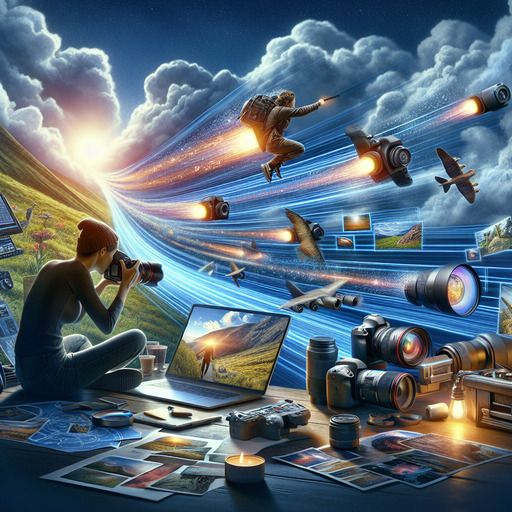
-
Table of Contents
- Mastering Photography: Tips and Techniques for Stunning Shots
- Understanding the Basics: Essential Photography Techniques
- Composition: The Rule of Thirds
- Lighting: Harnessing Natural and Artificial Light
- Advanced Techniques: Elevating Your Photography
- Long Exposure: Capturing Motion
- Editing: Enhancing Your Photos
- Choosing the Right Gear: Tools of the Trade
- Cameras: DSLR vs. Mirrorless
- Lenses: The Key to Versatility
- Conclusion: Elevate Your Photography Skills
- Questions and Answers
Mastering Photography: Tips and Techniques for Stunning Shots
Photography is more than just capturing moments; it’s about telling stories, evoking emotions, and creating art. Whether you’re a budding photographer or a seasoned professional, honing your skills is essential to stand out in this dynamic field. In this guide, we’ll explore essential photography tips and techniques that can elevate your work, from portrait and landscape photography to editing and gear selection.
Understanding the Basics: Essential Photography Techniques
Before diving into advanced techniques, it’s crucial to master the basics. Understanding these foundational elements will set the stage for more complex photography skills.
Composition: The Rule of Thirds
One of the most fundamental principles in photography is the rule of thirds. Imagine your frame divided into nine equal parts by two horizontal and two vertical lines. Positioning your subject along these lines or at their intersections can create more balanced and engaging photos.
- Example: In portrait photography, place the subject’s eyes along the top third line to draw attention.
- Case Study: Landscape photographers often use the rule of thirds to position the horizon, creating a more dynamic image.
Lighting: Harnessing Natural and Artificial Light
Lighting can make or break a photograph. Understanding how to use both natural and artificial light effectively is key to capturing stunning images.
- Natural Light: Golden hour, the period shortly after sunrise or before sunset, offers soft, warm lighting ideal for portraits and landscapes.
- Artificial Light: Experiment with different lighting setups, such as softboxes or reflectors, to achieve the desired effect in studio photography.
Advanced Techniques: Elevating Your Photography
Once you’ve mastered the basics, it’s time to explore advanced techniques that can add depth and creativity to your work.
Long Exposure: Capturing Motion
Long exposure photography allows you to capture the movement of elements like water, clouds, or traffic lights, creating a sense of motion in your images.
- Example: Use a tripod and a slow shutter speed to capture the smooth flow of a waterfall.
- Case Study: Night photographers often use long exposure to capture star trails, creating mesmerizing images of the night sky.
Editing: Enhancing Your Photos
Post-processing is an integral part of modern photography. Editing software like Adobe Lightroom or Photoshop can help you enhance your images, correct exposure, and add creative effects.
- Tip: Use editing tools to adjust contrast and saturation, bringing out the colors in your landscape photos.
- Example: Portrait photographers often use retouching techniques to smooth skin tones and enhance facial features.
Choosing the Right Gear: Tools of the Trade
Having the right equipment can significantly impact the quality of your photos. While skill is paramount, the right gear can enhance your capabilities.
Cameras: DSLR vs. Mirrorless
Choosing between a DSLR and a mirrorless camera depends on your needs and preferences. Both have their advantages and can produce high-quality images.
- DSLR: Known for their durability and extensive lens options, DSLRs are a popular choice among professionals.
- Mirrorless: These cameras are lighter and more compact, with advanced autofocus systems, making them ideal for travel photography.
Lenses: The Key to Versatility
The lens you choose can dramatically affect your photography style. Consider investing in a variety of lenses to expand your creative possibilities.
- Wide-Angle Lens: Perfect for capturing expansive landscapes or architectural shots.
- Prime Lens: Offers sharpness and a wide aperture, ideal for portrait photography.
Conclusion: Elevate Your Photography Skills
Photography is a journey of continuous learning and experimentation. By mastering essential techniques, exploring advanced methods, and choosing the right gear, you can create stunning images that captivate and inspire. Remember, the best way to improve is to practice regularly and never stop exploring new ideas.
For more insights and resources on photography, visit Wikipedia’s Photography Page.
Questions and Answers
Q1: What is the best time of day for outdoor photography?
A1: The golden hour, shortly after sunrise or before sunset, is ideal for outdoor photography due to its soft, warm lighting.
Q2: How can I improve my portrait photography skills?
A2: Focus on lighting, composition, and engaging with your subject to capture natural expressions. Experiment with different angles and lenses to find your style.
Q3: What editing software is recommended for beginners?
A3: Adobe Lightroom is user-friendly and offers powerful editing tools suitable for beginners. It allows you to adjust exposure, contrast, and colors easily.
If you’re interested in learning more about our photography services or have questions about this blog, please reach out to us via our contact page.